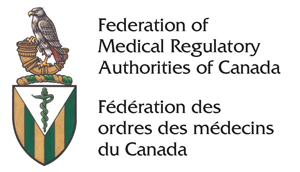View the following document in PDF format.
Preamble
FMRAC has developed a National Framework for Assessment and Supervision of physicians for Provisional and Full Licensure. The framework is a continuum from first application to the Medical Regulatory Authority (MRA), to obtaining a Provisional Licence that culminates in the achievement of full licensure. Prior to issuing a Provisional License, a candidate will undergo a review of qualifications, and a pre-practice assessment including an OSCE. Successful completion of these stages enables the candidate to obtain a Provisional License in which he/she can enter practice in their expected location as the Most Responsible Physician (MRP).
During the stage of Provisional Licensure, supervision is required. This report was developed by a group of FMRAC members and included extensive consultation with the Registrars and their staff in all MRAs. It provides national expectations and best practices on supervision that are applicable in all jurisdictions during provisional licensure. When applied in a consistent and responsible manner, supervision will contribute to ensuring we have quality physicians and public trust.
The route from a provisional license to a full license without achieving the FMRAC Canadian standard requires the physician to have:
a) Satisfactorily completed a period of supervised practice in a Canadian jurisdiction; and
b) Satisfactorily completed a summative practice assessment in a Canadian jurisdiction.
As the process of assessment and supervision is a continuum; there may be additional emphasis on any competency within the supervision period as determined by the outcome of the prior assessment. Accordingly, the level of supervision may be greater at the beginning and will be reduced over time.
There currently are different classes of registration across jurisdictions. The object of FMRAC members is to move to consistent terminology and practices nationally to facilitate physician mobility. In the context of this document, a provisional license is subject to terms, conditions or restrictions whether or not this information appears on the public register.
Assumptions
Principles of the Supervision Arrangement
The principles for the supervision arrangement are as follows:
Glossary of Terms
Most Responsible Physician (“MRP”) is the physician who has final responsibility and is accountable for the medical care of a patient.
Candidate refers to the physician who has a provisional license granted by the MRA in a specific jurisdiction that enables him/ her to practice under supervision until full licensure is achieved. S/he is the MRP in this role.
Supervision is the act of overseeing the practice of a candidate. The nature, frequency, level and duration of interaction between Supervisor and the Candidate will depend on the practice objectives of the supervisory arrangement defined by the MRA.
Mentor refers to a member of the MRA in the jurisdiction who is a trusted, experienced colleague. S/he is considered a “Friend of the Candidate” who serves to guide the Candidate through the health care system in that jurisdiction. Though the mentor may provide advice on how to deal with clinical and other practice matters they do not have an obligation to provide reports to the MRA, as this individual is not considered a Supervisor as defined in this document.
Supervisor is a physician, approved by the MRA who checks a Candidate’s clinical practice at regularly prescribed intervals set by the MRA in that jurisdiction, to ensure that the Candidate is meeting the expected standard of care and that patient safety is not compromised. The Supervisor is considered a “Friend of the MRA” and provides reports to the MRA.
Sponsor is generally an organisation responsible for recruiting a Candidate and providing a place of practice for the candidate who is under supervision. It is expected that the role of the sponsor is separate and distinct from that of the supervisor or mentor of the candidate.
CanMEDS framework and competencies are a guide to the essential abilities physicians need for optimal patient outcomes. The framework defines the competencies needed for medical education and practice and are organized thematically around 7 key physician Roles: Medical Expert; Communicator; Collaborator; Manager; Health Advocate; Scholar; Professional. Within this document “CanMEDS” refers to both CanMEDS and CanMEDS-FM.
Expectations are the requisite conditions for achieving the standard in the respective criterion for supervision.
Best Practices refers to the preferred conditions to enhance the supervisory experience.
Expectations and Best Practices for Supervision
Eight criteria have been identified as the essential components of supervision. These are:
Expectations and Best Practices for each criterion are identified in this section.
1. Roles and responsibilities of the Supervisor
Expectations
2. Length of the period of supervision
Expectations
Best Practices
3. Qualifications / Characteristics of the Supervisor
Expectations
Best practices
4. Training and support of the Supervisor
Expectations
The Supervisor has formal orientation and training by the MRA.
Best Practices
5. Tools for Supervisors
Expectations
Best Practices
6. Number of Supervisors who are involved in submitting official reports of the Candidate.
Expectations
Best Practices
7. Reporting Mechanisms
a. Nature/content of report
Expectations
Best Practices
b. Frequency of reports and management of the report information
Expectations
Best Practices
8. Agreements with the Supervisor
a. Contractual arrangements
Expectations
b. Remuneration for the Supervisor (This section is relevant in jurisdictions where supervisors are reimbursed.)
Expectations
